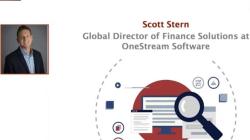This article details the main benefits and drawbacks of predictive planning. It provides recommendations on where to start your journey
FP&A takes an exciting path of transformation to meet the demands of modern business. Driver-based and predictive analytics are fundamental
The modern Financial Planning and Analysis (FP&A) function has an important role to play in enhancing decisions through the power
The fourth FP&A Board Connect was dedicated to the subject "How to Use Predictive Analytics and Machine Learning for Better
In the first FP&A Board Connect, Takeshi Murakami, Business Manager to CEO/President at Microsoft Japan, a speaker of the second Tokyo
Many of us have heard about promise of predictive analytics (PA) in machine learning (ML). Over 50% of organisations think
Pagination
Subscribe to
FP&A Trends Digest

We will regularly update you on the latest trends and developments in FP&A. Take the opportunity to have articles written by finance thought leaders delivered directly to your inbox; watch compelling webinars; connect with like-minded professionals; and become a part of our global community.






